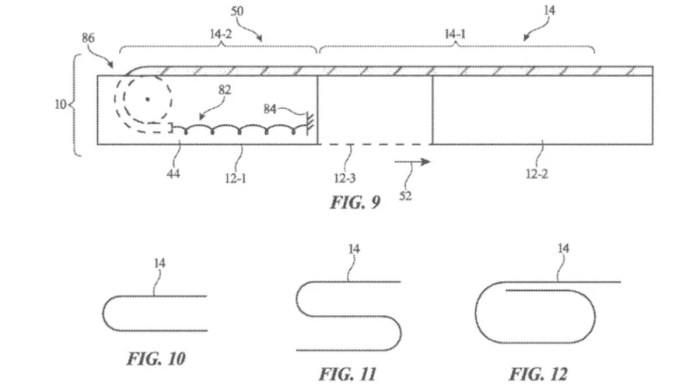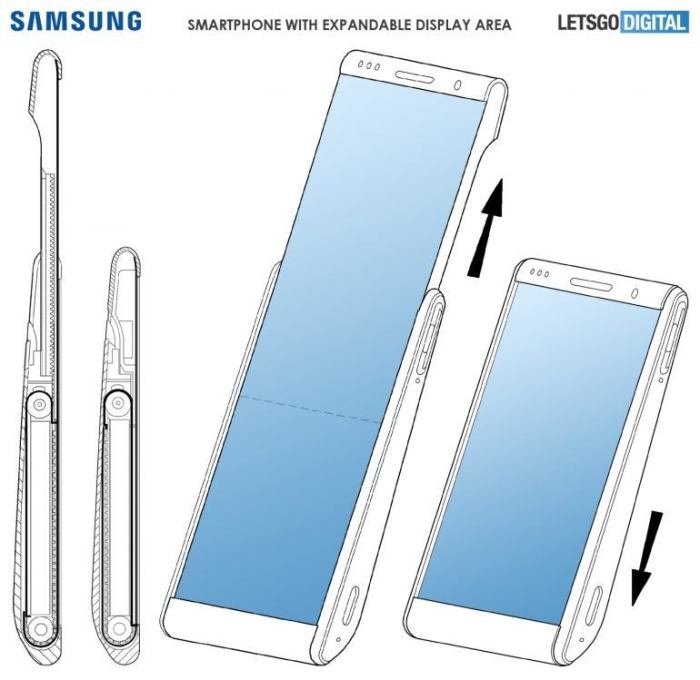Samsung’s History with Flexible Displays
Samsung’s journey into flexible displays began with a vision to revolutionize the way we interact with technology. From pioneering early prototypes to the development of groundbreaking rollable display technology, Samsung has consistently pushed the boundaries of what’s possible in display innovation.
Samsung’s Flexible Display Timeline
Samsung’s pursuit of flexible displays has been marked by a series of significant milestones:
- 2007: Samsung introduced the world’s first flexible AMOLED display, showcasing the potential of flexible technology in mobile devices. This early innovation laid the groundwork for future advancements.
- 2013: Samsung unveiled the Galaxy Round, a smartphone with a curved display. This was a crucial step towards creating devices with more immersive and ergonomic designs.
- 2016: The launch of the Galaxy S7 Edge marked a significant leap forward with its curved display, showcasing Samsung’s commitment to integrating flexible technology into mainstream smartphones.
- 2019: Samsung released the Galaxy Fold, a foldable smartphone that revolutionized the mobile experience. This marked a significant milestone in Samsung’s pursuit of flexible displays, demonstrating the potential for devices that could transform from smartphones to tablets.
- 2022: Samsung launched the Galaxy Z Fold4 and Galaxy Z Flip4, further refining foldable technology and making it more accessible to consumers.
Comparison of Samsung’s Flexible Display Technologies
Samsung has developed various flexible display technologies, each with its unique advantages and applications:
- Foldable Displays: Foldable displays allow devices to physically fold and unfold, transforming from one form factor to another. The Galaxy Fold and Galaxy Z Flip series exemplify this technology, enabling users to experience a larger screen when needed and a compact form factor when not.
- Bendable Displays: Bendable displays can be curved or flexed without breaking, offering a more ergonomic and immersive viewing experience. The Galaxy S7 Edge and Galaxy S8 series are examples of devices with bendable displays.
- Rollable Displays: Rollable displays can be rolled up and unrolled, expanding the screen size dynamically. This technology offers the potential for devices that can seamlessly transition between different screen sizes, adapting to various usage scenarios. Samsung’s rollable display patent showcases its commitment to pushing the boundaries of flexible display technology.
Challenges and Solutions in Developing Rollable Display Technology
Developing rollable display technology has presented Samsung with several challenges, including:
- Maintaining Display Integrity: Ensuring that the display remains functional and free from damage during rolling and unrolling requires meticulous engineering and material selection. Samsung has overcome this challenge by developing robust display materials and innovative mechanisms for rolling and unrolling the display.
- Managing Display Size and Resolution: Optimizing the display size and resolution while maintaining high image quality and responsiveness during rolling and unrolling is crucial. Samsung has addressed this challenge by developing advanced display drivers and control systems that ensure smooth and efficient transitions between different screen sizes.
- Preventing Display Degradation: Ensuring that the display remains durable and resistant to wear and tear over time is critical. Samsung has addressed this challenge by using high-quality materials and rigorous testing procedures to ensure long-term reliability and performance.
The Samsung Rollable Display Patent: Samsung Patent Rollable Display
Samsung, a leading innovator in display technology, has been actively pursuing the development of flexible and rollable displays for years. Their commitment to pushing the boundaries of display technology is evident in their numerous patents, including a significant one for a rollable display. This patent details a revolutionary design that could reshape the future of mobile devices and beyond.
The Samsung Rollable Display Patent: Technical Specifications and Key Features
The Samsung rollable display patent, filed in 2019, Artikels a flexible display that can be rolled up and unrolled, offering a unique and versatile form factor. This innovative technology utilizes a flexible OLED panel, which is housed within a cylindrical housing. The display panel is attached to a flexible substrate that allows it to bend and roll without damage. A key aspect of this patent is the inclusion of a mechanism for retracting and extending the display, ensuring smooth and controlled transitions between the rolled and unrolled states.
The patent also highlights the use of a specialized spring mechanism that assists in retracting and extending the display. This mechanism helps to ensure that the display is rolled and unrolled in a controlled and smooth manner, minimizing the risk of damage. The patent further describes a system for maintaining a consistent display surface, even when the display is rolled or unrolled. This system is crucial for ensuring optimal viewing quality and preventing image distortion.
Potential Applications of Samsung’s Rollable Display Technology, Samsung patent rollable display
The Samsung rollable display technology has the potential to revolutionize various industries, offering innovative solutions and enhancing user experiences. Here’s a table illustrating potential applications across different sectors:
| Industry | Potential Applications |
|—|—|
| Mobile Devices | – Smartphones: Imagine a smartphone that can transform into a tablet with a simple roll. – Wearables: Roll-up displays could be integrated into smartwatches, fitness trackers, and other wearables, providing larger and more immersive experiences. |
| Consumer Electronics | – Televisions: Roll-up TVs could offer a more immersive viewing experience, allowing for larger screens when needed and seamlessly disappearing when not in use. – Laptops and Tablets: Rollable displays could allow for more compact and portable devices that can expand to provide larger screens when needed. |
| Automotive | – Dashboards: Rollable displays could provide a more interactive and customizable dashboard experience, allowing for dynamic information displays and entertainment features. – Rear-view Mirrors: Roll-up displays could be used for rear-view mirrors, offering a wider field of view and potentially eliminating blind spots. |
| Healthcare | – Medical Devices: Rollable displays could be used for portable medical devices, such as patient monitoring systems, allowing for more compact and convenient solutions. – Surgical Displays: Roll-up displays could provide surgeons with larger and more detailed views during procedures. |
| Retail | – Digital Signage: Roll-up displays could be used for dynamic and interactive digital signage, offering a more engaging and immersive experience for customers. – Interactive Displays: Rollable displays could be integrated into interactive kiosks and information centers, providing a more flexible and engaging user experience. |
Samsung patent rollable display – Samsung’s rollable display patent is a glimpse into a future where screens are flexible, adaptable, and seamlessly integrated into our lives. While challenges remain, the potential benefits are vast, promising a world where technology is no longer limited by rigid designs. The possibilities are exciting, and we can’t wait to see how this groundbreaking technology shapes the future of screens.
Imagine a future where your phone transforms into a tablet with a flick of the wrist, all thanks to Samsung’s patent for a rollable display. It’s a tech dream that’s closer than you think, and it’s just as exciting as the news that Instagram is testing the ability to follow hashtags. With a rollable display, Samsung might just be paving the way for a whole new era of mobile experiences, where our devices are as adaptable as we are.
 Standi Techno News
Standi Techno News

